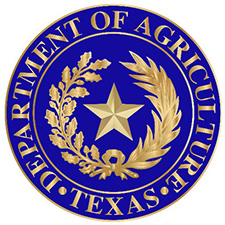(AG Insider) The government could spend $25 billion, or more, to help the farm sector survive the coronavirus pandemic and the accompanying economic slowdown, said Agriculture Secretary Sonny Perdue on Thursday. If that happens, the administration will have spent more than $50 billion in three years to mitigate the impact of catastrophic disease and trade war on U.S. agriculture.
Those are enormous amounts when traditional federal supports — farm subsidies and crop insurance — cost about $15 billion a year. To accommodate ad hoc payments, the administration doubled the usual limit per farmer and Congress almost entirely removed a ban on payments to the wealthiest operators.
Market prices for most agricultural commodities are down sharply as coronavirus illnesses disrupt processing channels and stay-at-home orders have essentially shut down the food service sector. Farm groups have deluged the USDA with calls for help, including purchases of excess foods, payments in exchange for cutting production, and cash in the bank account.
Perdue said he hoped to release “very soon” aid totaling $16 billion to $18 billion in a first wave, with the possibility of dipping into $14 billion that will become available in midsummer. Asked during a Fox Business interview if agriculture would get $25 billion, Perdue said, “It’s not going to be that much initially, but we think it will be that much or possibly more needed by the time we get into the summer.”
“There will be direct payments, both to our specialty crops, both to our dairy, our livestock — cattle, cow-calf, hogs — and other commodities as well that have suffered from this.”
Along with direct payments, the government will buy milk and meat for donation to charity, Perdue said. “We will be buying the product, the milk that is being dumped, the protein that is going unwanted at home.”
The two-prong approach of cash payments to farmers and ranchers and purchases of surplus foods is similar to the administration’s stopgap trade war assistance. To mitigate the impact to retaliatory tariffs, the White House spent $10 billion on 2018 production and $16 billion on 2019 crops and livestock. The payments were welcome in farm country, although there were also complaints that some commodities were left out and that payment formulas favored some crops over others. Nearly 10 times as much was devoted to cash payments to farmers as was spent on food purchases.
Early this week, the FAPRI think tank at the University of Missouri estimated the pandemic, by lowering crop and livestock prices, would reduce net farm income by one-fifth, or $20 billion, this year. FAPRI director Pat Westhoff said on Thursday, “It’s very easy to imagine worse incomes.”
If supply chain issues, such as the closing of processing plants, continue or become widespread, the impact on farm income would be greater. “The recession could be deeper and/or longer than we anticipate,” said Westhoff in an email. “A worse recession could be a severe drag on markers into 2021 and even beyond.”
Some large meat plants are closed temporarily due to coronavirus outbreaks among workers. They include JBS USA’s beef plant in Greeley, Colorado, and Smithfield’s hog plant in Sioux Falls, South Dakota. Hundreds of the 3,700 employees at the Smithfield plant have the coronavirus.
“There has been some disruption in the supply chain,” felt from the farm to the supermarket, said economist Nathan Kauffman of the Kansas City Federal Reserve Bank, pointing out that while dairy and beef prices in the grocery story have increased, market prices for milk and cattle have slumped.
“The near-term outlook is highly dependent on the trajectory of Covid-19,” said Kauffman during a University of Nebraska webinar. “My own view is the economic shock is likely to have some persistence. It is difficult to say what it is.”
Today’s quick hits, April 17, 2020
First Iowa meat plant deaths from Covid-19 (Associated Press): Two employees at the Tyson Foods pork plant at Columbus Junction, in southeastern Iowa, are the state’s first packing plant workers known to have died from the coronavirus.
Governor expects plan to reopen pork plant (Sioux Falls Argus Leader): South Dakota Gov. Kristi Noem said she expects a report from the CDC in coming days that will lead to the reopening of a Smithfield Foods pork plant where nearly 600 of 3,700 workers have tested positive for the coronavirus and one has died.
When virus and wildfires mix (Capital Public Radio): Officials say that if a large wildfire forces an evacuation in California, they will put people into hotel rooms to preserve physical distance, and if a mass evacuation is required, they will do temperature and symptom checks on evacuees.
Putting the ‘R’ in reopening (White House): President Trump named all 53 Republican senators and 23 House Republicans to his 97-member Opening Up American Again Congressional Group.
Suit seeks to protect ag workers (UFW): Labor advocates requested a court injunction to order Washington State to immediately update health and safety standards for agricultural workers and replace “garbled and non-mandatory” guidelines against the spread of the coronavirus.
Conservation on a landscape scale (USDA): The NRCS has awarded $208 million for 48 stewardship projects through a program in which landowners work together to improve water and soil conservation on a watershed or landscape basis rather than working farm by farm.











